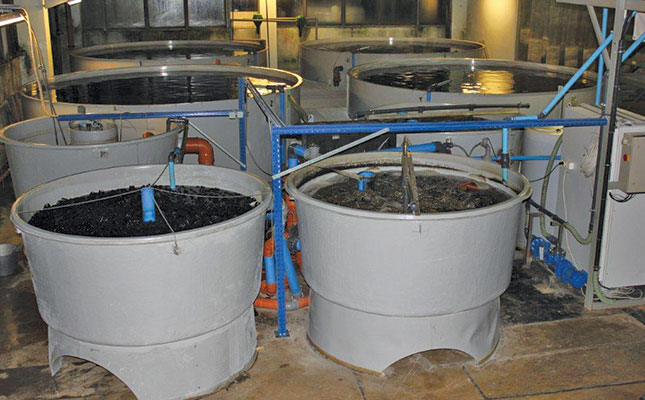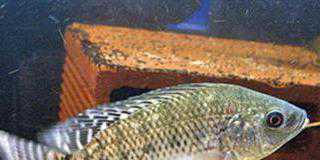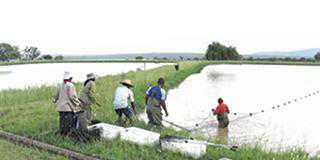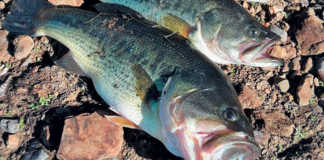
Photo: Nicholas James
The type of system employed in a fish production unit depends on many factors. The most crucial is the species being farmed. Almost as important, though, is the level of sophistication of the technology.
The most complex set-up is the recirculating aquaculture system (RAS), and the simplest is the pond-based system. Each has its advantages. An RAS uses and reuses a limited volume of water, has a small footprint, allows for climate control, and enables intensification (increasing the stocking rate). A pond farm offers lower risk, requires fewer skills to operate, and is less dependent on a reliable power supply.
A question of numbers
A simple tilapia RAS may comprise a number of tanks inside a hothouse tunnel. The grow-out tanks are connected to other containments that comprise the filtration needed to remove the waste products.
Such an unsophisticated set-up is for practising aquaculture as a hobby, not for commercial purposes. The maximum fish stocking density is between 5kg/ m3 and 10kg/m3 water; more than this will result in sediment accumulation, ammonia spikes and poor water quality.
If intensification is increased to commercial stocking rates (between 20kg/ m3 and 50kg/ m3), the need for sophisticated life-support technology will increase.
Or will it?
The limiting factors in intensive fish farming are availability of oxygen, and ammonia and solids removal.
- Oxygen
This becomes severely depleted as stocking rates rise. Because oxygen is absorbed at the water surface, the limitation of oxygen is more a function of surface area than volume, so space becomes an issue in the confines of a tunnel. Oxygen generators that inject pure oxygen are a high-tech and expensive alternative to atmospheric air injection. - Ammonia removal
This is limited by the capacity of the bio filter to break down the waste products. It is effected by static filtration, where tanks filled with media coated with bacteria do the job (either aerated, not aerated or in fluidised bed form), or by mechanical drum-type filters that revolve aerated media within tanks. The latter are expensive, high-tech and unreliable. - Solids removal
This is achieved with static screens or settlement tanks, or with mechanical devices such as a drum separator. The latter requires energy, servicing and spares to operate continuously; if it fails, the biofilter is smothered, poisoning the system.
Technical sophistication is not simply a function of the scale of operation, or availability of funding. Risk must be paramount in determining choice. Using an intensive system that depends on electric machinery for oxygenation, solids removal or filtration, one must assume that failure of a component is inevitable.
If this will result in stock losses, duplication is essential. In addition, staff must be competent in running and repairing such equipment.
I recommend the use of high-volume settlement units, wide but shallow grow-out tanks, and massive volume filtration. This offers greater simplicity, less risk of failure, lower running costs, and fewer sleepless nights.
How the system works when it is new is irrelevant; how it works when it is old is what really matters!











